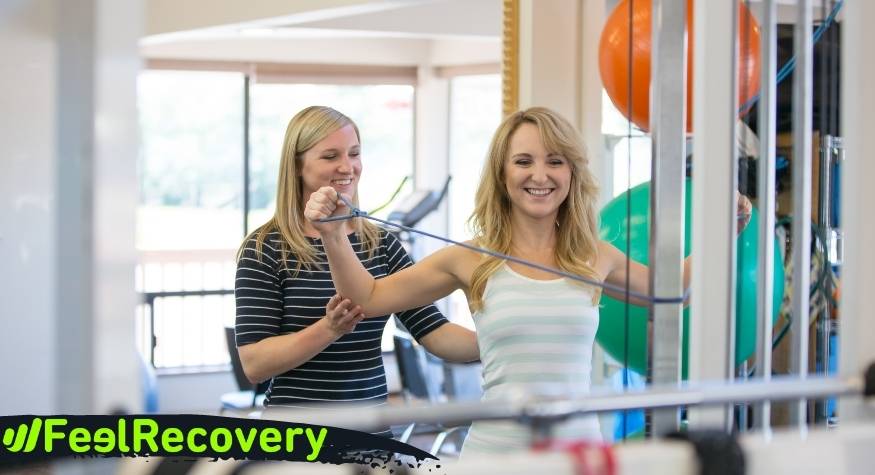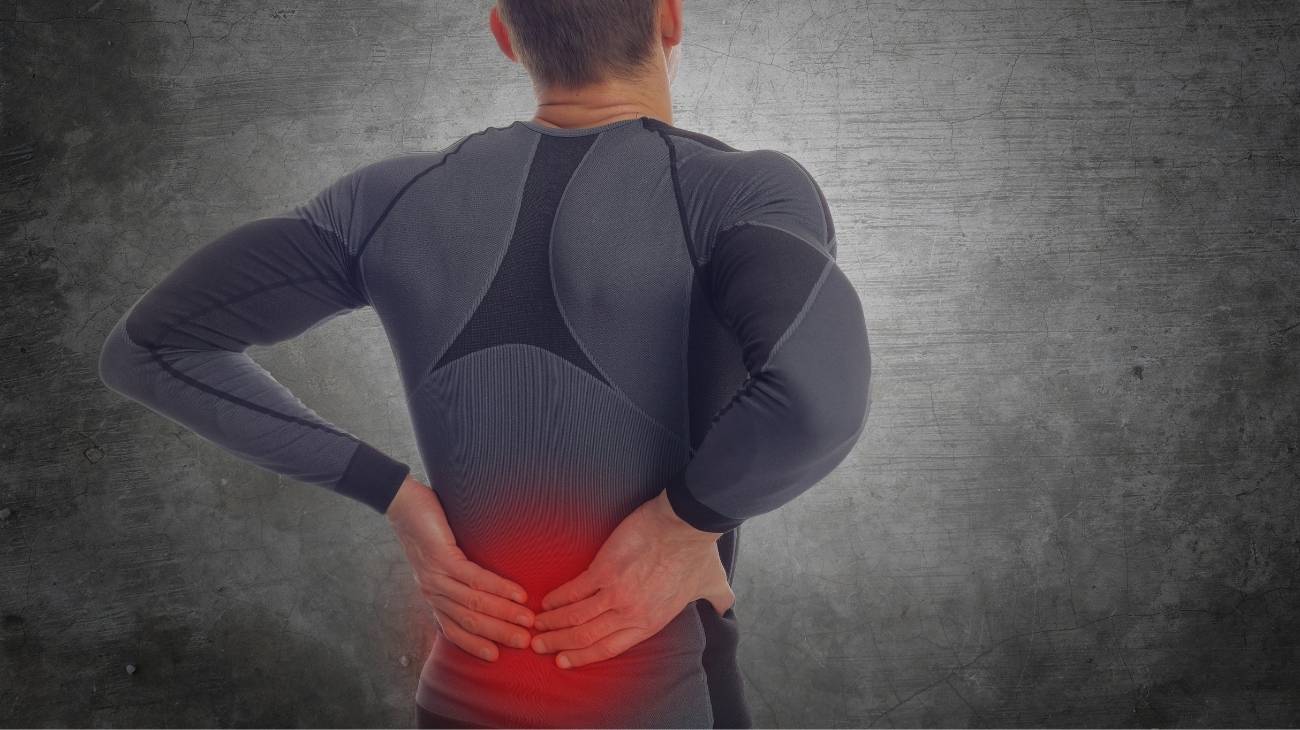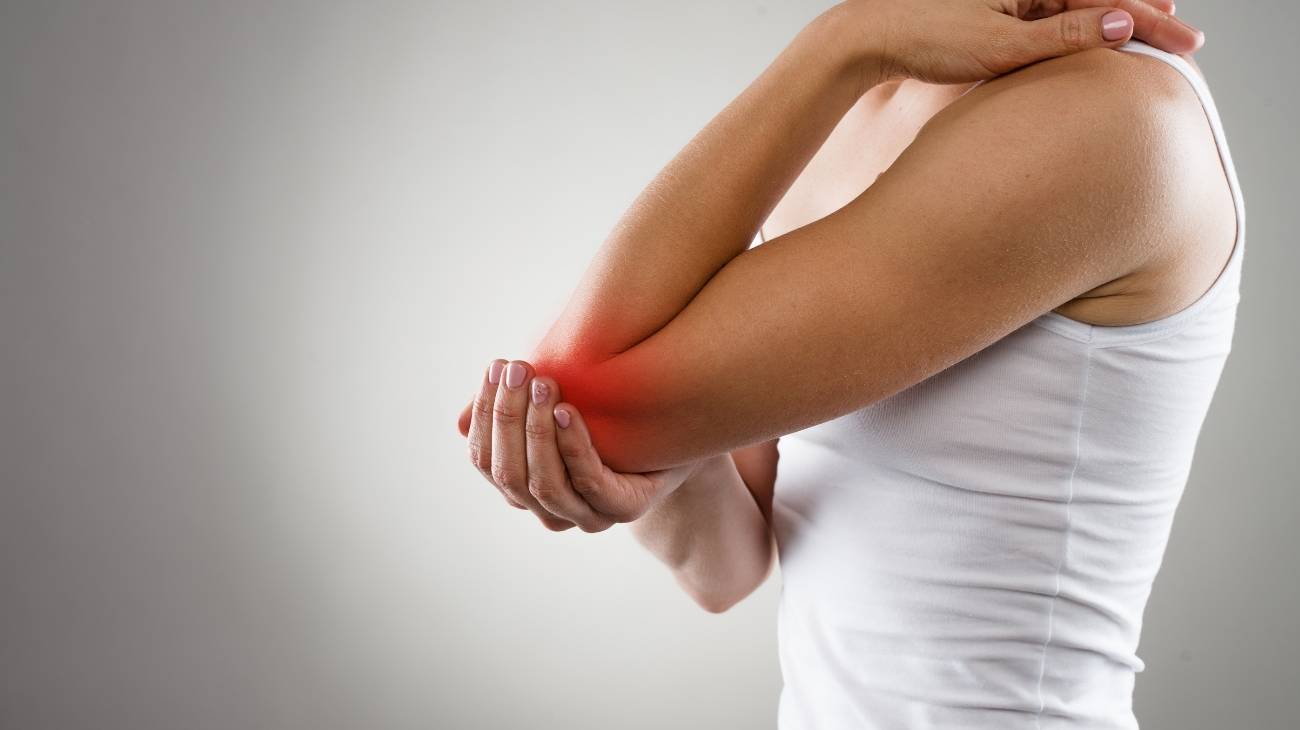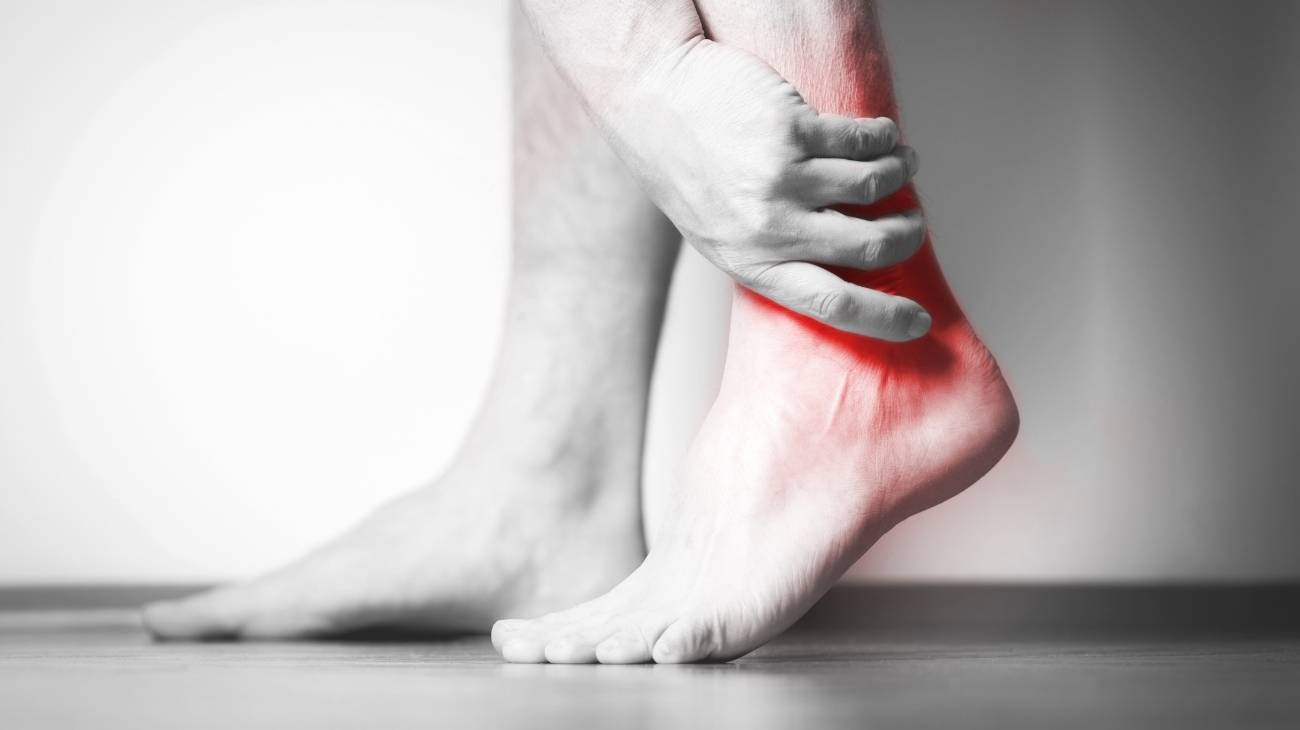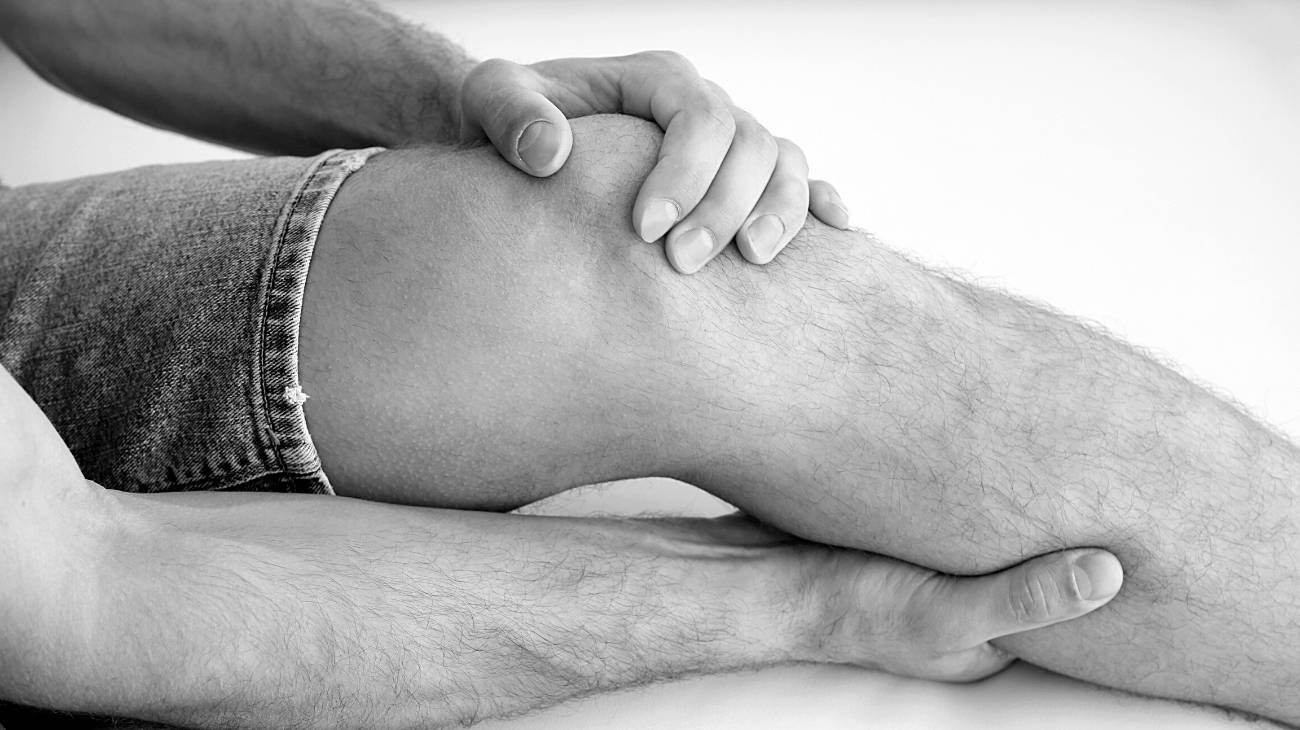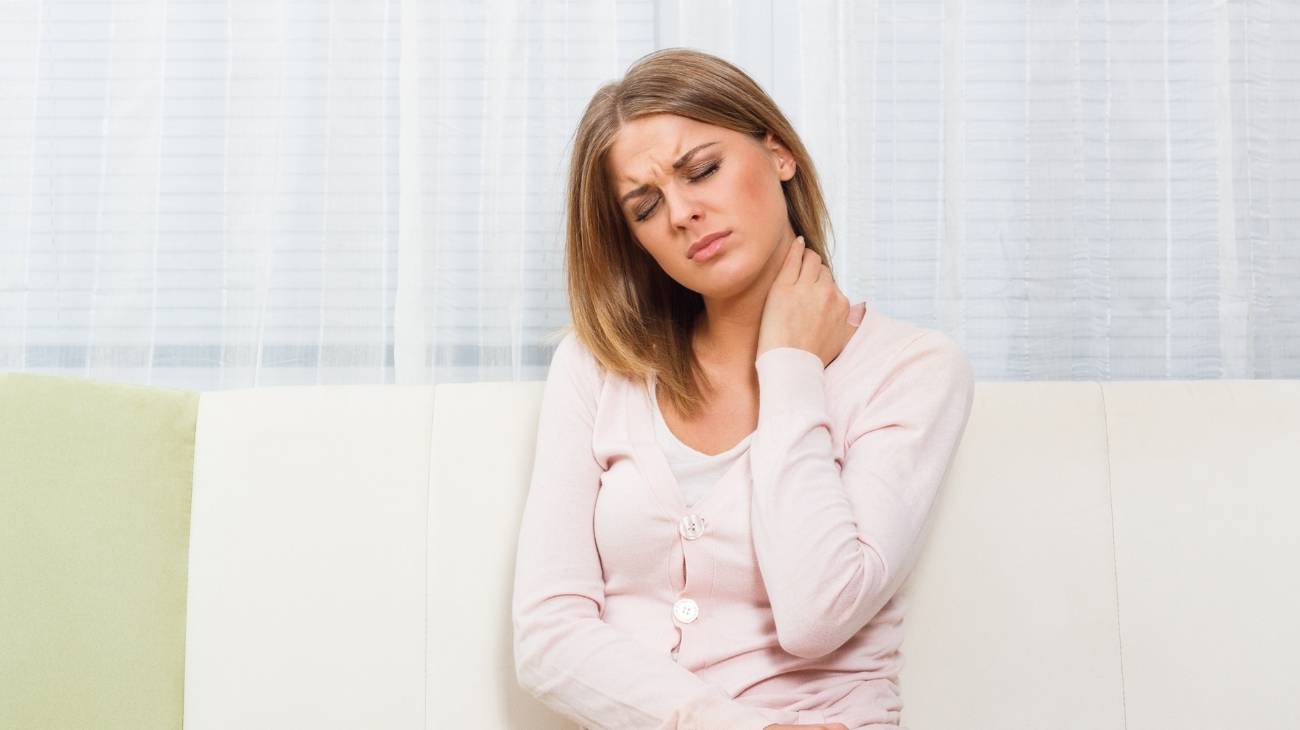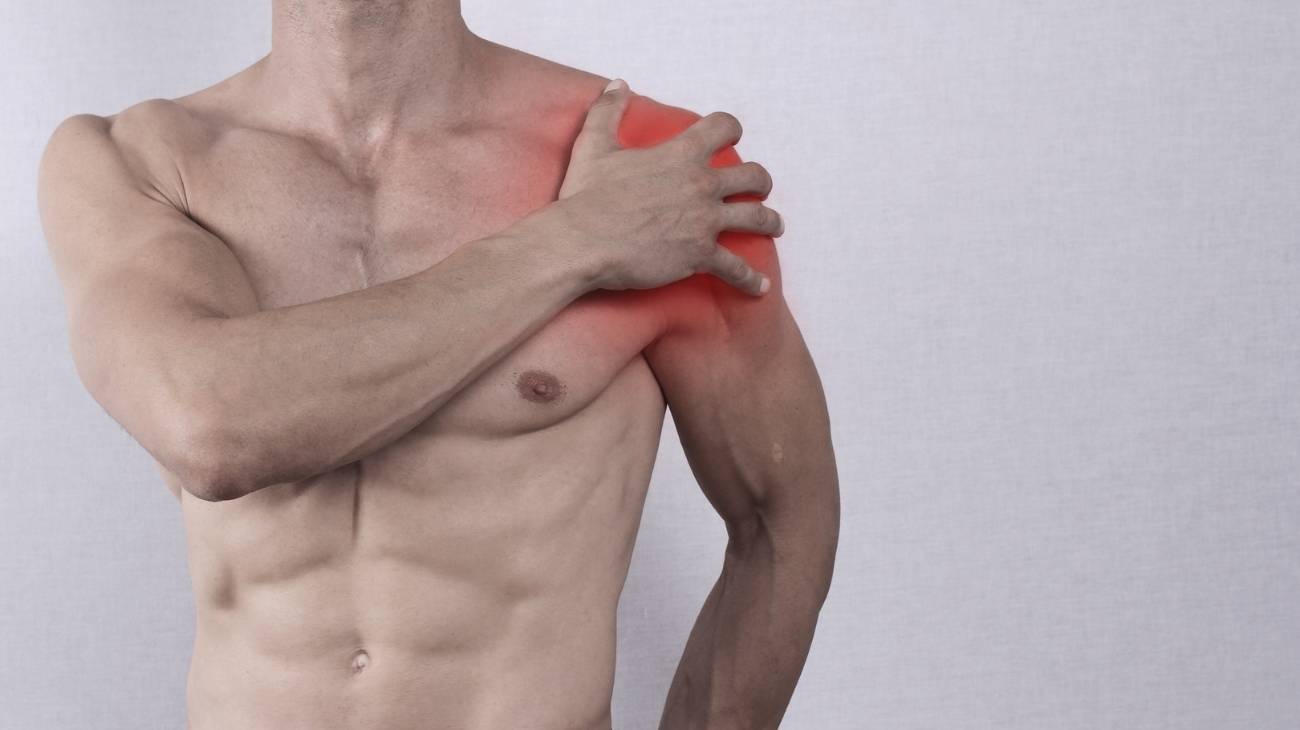- What is a shoulder sprain and what degrees are there?
- What are the causes and risk factors for shoulder sprain?
- Best products for shoulder sprain
- Main symptoms that warn us that we have a shoulder sprain
- What treatments are there to improve the symptoms of a shoulder sprain?
- What are the most effective prevention methods for shoulder sprains?
Ligaments are strong bands of tissue that connect one bone to another and have a certain elasticity that allows movement and prevents the bones from twisting excessively. However, when their limit of flexibility is exceeded, a rupture or tear can occur, leading to a sprain or strain.
Shoulder sprains are one of the most common types of injuries, especially among athletes involved in high-speed or contact sports. We'll tell you what they are and how serious they are, as well as their causes, symptoms, treatments and prevention.
What is a shoulder sprain and what degrees are there?
While it is true that a joint is the area where two or more bones meet, the shoulder joint (or glenohumeral joint) is joined by ligaments that connect the clavicle to two bony reliefs located on the scapula; that is, the coracoid process (located on the anterior side of the scapula) and the acromion (located on the anterior and lateral side of the scapula). Therefore, if the ligaments that attach the clavicle to the coracoid process are partially or completely torn, a shoulder sprain occurs.
A shoulder sprain is defined as a tear or rupture of the ligaments that support the shoulder or, specifically, the glenohumeral joint that connects the upper arm bone, the humerus and the scapula fossa. This is usually caused when the glenohumeral ligaments (lower, middle and upper) are stretched beyond their capacity.
However, depending on the level of severity of a sprain of this type, there are three stages of sprains that define the pathological state that has generated the injury.
It is therefore worth knowing what each one consists of:
Grade 1
This is the mildest shoulder sprain of all. In this case, there is a slight capsulo-ligamentous strain that does not produce deformity. As a result, although there is stretching of the ligamentous tissue, it does not trigger ligament rupture and there is no associated joint laxity. Consequently, the affected person suffers only mild pain, the inflammatory process is minimal and can perform full shoulder movements.
Grade 2
Subluxation of the joint occurs, which is the displacement of the joint due to stretching of the soft tissues. As a result, there is partial rupture of the ligaments and a minute deformity appears with some joint instability. Thus, the patient may experience increased pain, as well as various levels of swelling or swelling and ecchymosis or bruising in the shoulder region.
Grade 3
This is the most severe case of a shoulder sprain, as a complete rupture of the ligamentous portion is observed. In effect, the diagnosis corresponds to a capsulo-ligamentous injury with a tear (especially of the acromioclavicular ligament). In addition to this, due to the displacement of the distal portion of the clavicle, there is considerable deformity of the shoulder. Furthermore, the pain is sharp and constant, the swelling is accentuated, there is a high ecchymosis and functional impotence of the impacted joint.
What are the causes and risk factors for shoulder sprain?
In general terms, the sprain caused in this joint of the upper extremities is a frequent traumatic injury, especially in sports. It is mainly caused by a fall with the arm in extension or direct trauma to the shoulder.
However, behind it, there are different motives and risk factors that produce the sprain in this area, which are:
- If you receive a blow or impact directly on the shoulder, a shoulder condition is triggered.
- A fall on an outstretched or loose arm.
- Twisting or bending the arm in a straight position.
- This type of injury is also caused by progressive degeneration or wear and tear of the tendon tissue.
- The patient may contract a shoulder sprain when lifting heavy objects for a prolonged period of time.
- Certain sports that involve repetitive arm movements (football players, rugby players, handball players, swimmers, wrestlers, etc.) have an increased risk of shoulder sprains.
- Loose joints or connective tissue disorders also increase the risk of shoulder injury.
- Imbalance and lack of coordination are other strong risk factors.
Best products for shoulder sprain
Bestseller
-
Acupressure Mat and Pillow (Black/Gray)
£44,95 -
Acupressure Mat and Pillow (Green/Navy)
£44,95 -
Acupressure Mat and Pillow (Pink/Bordeaux)
£44,95 -
Acupressure Pillow (Black/Gray)
£21,52 -
Acupressure Pillow (Green/Navy)
£21,52 -
Acupressure Pillow (Pink/Bordeaux)
£21,52 -
Ice Massage Roller Ball (Black)
£34,95 -
Ice Massage Roller Ball (Green)
£34,95 -
Ice Massage Roller Ball (Pink)
£34,95 -
Microwave Wheat Bag for Neck & Shoulder Pain Relief (Hearts)
£21,50 -
Microwave Wheat Bag for Neck & Shoulder Pain Relief (Oxford)
£21,50 -
Microwave Wheat Bag for Neck & Shoulder Pain Relief (Sport)
£21,50 -
Microwave Wheat Bag for Neck Pain Relief (Hearts)
£17,50 -
Microwave Wheat Bag for Neck Pain Relief (Oxford)
£17,50 -
Microwave Wheat Bag for Neck Pain Relief (Sport)
£17,50 -
Microwaveable Wheat Bag for Pain Relief (Hearts)
£17,50 -
Microwaveable Wheat Bag for Pain Relief (Oxford)
£17,50 -
Microwaveable Wheat Bag for Pain Relief (Sport)
£17,50 -
Shoulder Support Brace (Black)
£21,95 -
Shoulder Support Brace (Green)
£21,95 -
Shoulder Support Brace (Pink)
£21,95 -
Trigger Point Massage Stick (Black)
£12,95 -
Trigger Point Massage Stick (Green)
£12,95 -
Trigger Point Massage Stick (Pink)
£12,95
Main symptoms that warn us that we have a shoulder sprain
When a shoulder sprain is triggered, by default, it manifests a particular symptomatological picture through which it is possible to distinguish this condition from other types of pathologies that are similar.
Know what are the different symptoms and signs that appear with the injury and here, we list each of them:
- Pain in the shoulder joint area. Depending on the degree of the strain, this can increase significantly.
- Inflammation or swelling and tenderness to touch.
- Stiffness and discomfort, especially with movement.
- Functional limitation with difficulty moving the shoulder above 90 degrees.
- Bruising or discolouration of the skin in this region that serves as a link between the body and the arm.
- Deformity of the clavicle. Especially when the sprain manifests itself in grade 2 and 3.
- Tingling sensation in the shoulder.
- Occasionally, laceration (break in the skin) or temperature around the affected shoulder.
What treatments are there to improve the symptoms of a shoulder sprain?
Because of the pain caused by a sprained shoulder, most people affected tend to resort to certain drugs to alleviate the symptoms of a sprained shoulder. However, this is not recommended and, fortunately, there is the possibility to undergo other treatments that are more effective in eliminating the symptomatological condition of such a sprain.
Below, we will detail the different treatments that can help a patient with a shoulder sprain to recover quickly:
Alternative and complementary therapies
Alternatively, over time, various therapeutic techniques have emerged that offer excellent results in alleviating the signs and symptoms of sprains. They guarantee an analgesic effect because they reduce pain, as well as an anti-inflammatory and relaxing effect so that the affected region can return to normal function after the injury.
The following complementary therapies are the most suitable for treating this ailment:
- Heat and cold therapy: This is a treatment that uses the properties of heat and cold to improve the symptoms of such an injury. Since, by nature, cold eliminates pain, decreases inflammation and helps prevent ligament tissue damage. Whereas, heat is also ideal for deflating, increasing blood flow and improving the flexibility of the ligaments in order to restore mobility to the afflicted region. To implement this therapy, it is recommended to apply an ice pack for 15 to 20 minutes on the shoulder and alternately apply warm compresses for the same amount of time. According to medical recommendations, it can be done 3 or 4 times a day for two or three consecutive days.
- Compression therapy: A compression therapy is mainly characterised by using an elastic device to exert controlled pressure on an area of the body that needs to obtain better blood flow, normalise vascular wall function and decrease venous pressure to lower inflammation and reduce pain. In the case of a shoulder sprain, it is advisable to treat it with an adjustable compression shoulder brace so that movement can be limited until the shoulder can heal completely.
- Massage therapy: Massage is generally considered to be beneficial in treating shoulder pain, with the aim of releasing muscle restrictions in the surrounding tissue and thereby increasing the range of motion of the joint, as well as significantly reducing the pain. However, when implementing massage therapy, it is essential to consult an expert in the field to treat the injury with a concise and accurate diagnosis, thus preventing the sprain from worsening.
- Acupuncture therapy: Another effective way to treat a shoulder sprain is to use acupuncture, which is a technique proposed by traditional Chinese medicine to help overcome this type of condition, improving blood circulation, reducing pain and reducing inflammation of the impacted part. To do this, specialists use fine painless needles that are inserted in specific areas of the body to achieve a natural analgesic and anti-inflammatory effect throughout the body. In this way, acupuncture stimulates energy points connected to the nervous system to release endorphins and provide a sense of relief, unblock energy channels and ensure well-being during treatment.
- Natural remedies using plants: Naturally, many plants have properties that are ideal for minimising pain, reducing swelling and speeding up the rehabilitation process of this kind of injury, due to their sedative effects. Consequently, inherent medicines based on certain plants are conducive to improving the signs of a sprain in the shoulder area (especially the pain there). Thus, in this case, the following is recommended: apply arnica to the affected shoulder, place an infusion of sage on the sprain (as hot as possible), rub rosemary on the painful area gently, take tinctures of devil's claw, grate a potato and add it to a cup of water to drink before breakfast, drink infusions of meadowsweet, etc.
- Healthy lifestyle habits: To treat shoulder sprains, patients are also advised to consider some healthy daily habits to prevent this type of injury from becoming more severe. Basically, these practices include: Stop hunching your shoulders and keep them relaxed, keep the impacted area clean and dry, do stretching and shoulder exercises to strengthen the ligaments and muscles, avoid extreme or unfamiliar sports and eat a balanced diet.
Dietary supplements
Also known as "nutritional supplements", they consist of certain products that contain one or several food ingredients (vitamins, minerals, enzymes, amino acids and herbs) and help to complement the daily food intake in order to provide a complete well-being to the organism. For this reason, they are considered as a useful formula to alleviate different types of injuries, such as sprains.
Consequently, if you want to improve the symptomatology of this condition, it is also pertinent that you resort to some food supplements that, combined with a healthy diet, manage to speed up the rehabilitation process that a shoulder sprain requires, ensuring joint care and producing a relaxing effect to soothe the pain and/or discomfort caused.
Here are the best dietary supplements to mitigate and even prevent this pathology:
- Vitamin A: It is an antioxidant substance that helps in the formation and maintenance of soft tissues and bones, as well as regenerating tissue. It is also a vitamin that improves the immune system and benefits the heart, lungs and kidneys. It is therefore crucial for the body as a whole to work properly and also helps prevent the symptoms of a sprained shoulder. To consume vitamin A, consider the following foods: spinach, peppers, carrots, mango, peaches, papaya, cod liver oil, milk, eggs, etc.
- Vitamin C: It is a vitamin that is essential for the health of ligaments and tendons, so it is indicated to treat sprains that impact the shoulder (and even other parts of the body). It is also a great help in soothing this ailment, as it reduces swelling and helps to speed up the healing process by providing increased synthesis of high-quality collagen. The main food sources of this substance are: melon, oranges, grapefruit, kiwi, strawberries, pineapple, papaya, mango, red and green peppers, broccoli, tomatoes, spinach, cabbage, potato, cauliflower, turnip greens.
- Vitamin E: By default, it is considered a vitamin that is essential for ligaments and tendons to function properly, apart from increasing the effectiveness in treating injuries and structural weakness, it also has anti-inflammatory effects because it increases blood flow to the affected region by releasing cytokines that regulate inflammation and brings together tissue repair cells in the area of injury (in this case, the shoulder). As a result, it is important to consume vitamin E through: vegetable oils (sunflower, hazelnut, wheat germ, almond and rapeseed), nuts (almonds, hazelnuts and peanuts), peanuts, fish (salmon, sardine, permit, horse mackerel, eel, etc.), spinach, asparagus, avocados, broccoli, etc.
- Collagen: This is an elastic protein present in the skin, ligaments, tendons and other flexible structures of the body. It has proven to be effective in improving musculoskeletal pathologies, thanks to the fact that it plays a positive role in maintaining joint mobility. Therefore, to increase movement in the shoulder area after an injury such as a sprain, it is recommended to consume collagen from: cheese, milk, eggs, oily fish, meat, nuts, celery, avocado, onion, strawberries and cherries.
- Magnesium: Mainly, it is based on a mineral responsible for regulating the functioning of the nervous and muscular system; in addition to this, magnesium is essential for the synthesis of collagen in the body and thus, it is relevant to ingest this food supplement to improve the health of the joints in the long term. Thus, if you suffer a sprain of any kind, it is valuable to consume this mineral in conjunction with collagen to eliminate the signs and symptoms of the injury. It should be noted that magnesium is found in: avocado, spinach, artichoke, lentils, chickpeas, nuts, quinoa, whole wheat, milk and yoghurt, dark chocolate, etc.
Physiotherapy treatments
In terms of physiotherapy, there are several options that help to speed up the rehabilitation process when someone suffers an elbow sprain or strain. Physiotherapy is a health science that has proposed therapies and exercises that are most effective in relieving pain, reducing inflammation, restoring shoulder strength and endurance, and restoring joint movement.
Therefore, to minimise the symptoms of this type of injury, it is also appropriate to undergo physiotherapy treatment to maximise the mobility of the shoulder during the recovery regime, strengthen its function significantly and even reduce the likelihood of further, more acute shoulder sprains.
The exercises or practices to be performed must be directed by a therapist who will set up a rehabilitation programme according to the exact diagnosis and level of severity of each patient's injury. On a general level, the therapist will help you strengthen and stretch the muscles around your shoulder, teach you the correct posture to maintain your shoulder and even explain the proper techniques for moving your shoulder when performing everyday actions or sports activities.
The following exercises are suitable for each person when it comes to improving a shoulder sprain:
- Stretching exercises: This type of exercise includes stretching the back of the shoulder and the front of the shoulder (by raising the hands behind the back), as well as the anterior shoulder towel stretch, wall stretches and the pendulum exercise.
- Exercises to strengthen the shoulder: Internal and external rotation (with band), isometric shoulder exercises, shoulder blade retraction (scapular) with and without tensioners, wall push-ups and arm reach.
Medications
On their own initiative, most people with a sprained shoulder (or indeed any other region of the body) choose to take over-the-counter drugs to relieve the symptoms that have been triggered by the injury, without first consulting a doctor.
Either to soothe the pain, reduce inflammation and generally restore movement to their shoulder. However, self-medication is not advisable because it can lead to side effects such as nausea, diarrhoea, dizziness, fainting, fatigue, drowsiness, dependence, addiction or cardiac arrest.
Consequently, if you notice worsening pain, difficulty in moving your shoulder, weakness or numbness in your arm and a change in colour under your shoulder, it is best to see a specialist doctor who can diagnose this type of injury using x-rays, arthrography or magnetic resonance imaging (MRI). He or she will then be able to prescribe the appropriate treatment to eliminate the condition as soon as possible.
In addition, when prescribing the medications you need to treat your shoulder sprain, he or she will take into consideration several important aspects, such as: your medical history, your tolerance to drugs, the degree of severity of your injury, your general health, your age and other details. Under this, in addition to speeding up the recovery process to get your shoulder back to normal function, your healthcare professional will also prevent the side effects mentioned above from occurring.
Surgery
In general, patients with mild shoulder sprains without dysfunction or instability recover without the need for a surgical procedure. However, in some severe cases, surgery to repair or replace a torn ligament may be necessary, especially if the sprain has not improved with other treatments and has worsened, if there is an acromioclavicular dislocation, or to prevent recurrence of the injury (especially in athletes).
What are the most effective prevention methods for shoulder sprains?
Although some blows or accidents cannot be avoided in order to get a shoulder sprain, people have the alternative of taking certain precautionary measures to obstruct the possibility of suffering from a shoulder sprain.
Therefore, in the form of recommendations, we would like to introduce you to the most effective methods of prevention in order to avoid a shoulder sprain:
- Progressive training: Gradually perform exercises to strengthen the muscles of the arm, back and chest. This helps to reduce the risk of spraining your shoulder significantly.
- Stretching beforehand: Before doing any physical activity or sport, it is essential that you carry out all the relevant stretches correctly, so that the body can warm up and prevent injuries. It is also appropriate to do them after exercise.
- Improve sports technique: It is recommended to learn the proper techniques for exercising and practising any sport. This will reduce the strain on ligaments, tendons and muscles (even those around the shoulder).
- Rest: If you feel exhausted or have any discomfort in your shoulders before practising a sport, it is best to opt out and take a break.
- Postural hygiene: At all times, make sure that you do not hunch or bend your shoulders. The right thing to do is to keep them relaxed to avoid stiffness.
- Sports equipment: If you play high-impact sports, don't forget to wear protective shoulder pads throughout the activity.
- Ergonomics at work: Avoid working with your arms above shoulder level for a prolonged period of time. However, if necessary, it is best to use a ladder or foot stool.
- Don't overexert yourself: Make sure you don't overexert the capacity of your arms and shoulders when carrying objects.
- Improve your posture when sleeping: When sleeping, it is appropriate that the weight of the arm itself does not compress or tend to force the rotation of the shoulder. An ideal alternative is to sleep on your back, resting your shoulders all night long.
- Watch your posture: If you have to sit for long periods of time, it is valuable to adopt good posture to reduce the risk of spraining or injuring your shoulder. For example, you should keep your head above your head and lean on something comfortable behind your lower back.
References
- Woodward, T. W., & Best, T. M. (2000). The painful shoulder: part II. Acute and chronic disorders. American Family Physician, 61(11), 3291-3300. https://europepmc.org/article/med/10865925
- Kelsh, M. A., Fordyce, T. A., Lau, E. C., Mink, P. J., Morimoto, L. M., Lu, E. T., & Yager, J. W. (2009). Factors that distinguish serious versus less severe strain and sprain injuries: an analysis of electric utility workers. American journal of industrial medicine, 52(3), 210-220. https://onlinelibrary.wiley.com/doi/abs/10.1002/ajim.20664
- Quillen, D. A., Wuchner, M., & Hatch, R. L. (2004). Acute shoulder injuries. American Family Physician, 70(10), 1947-1954. https://www.aafp.org/pubs/afp/issues/2004/1115/p1947.html
- Wilk, K. E., Obma, P., Simpson, C. D., Cain, E. L., Dugas, J., & Andrews, J. R. (2009). Shoulder injuries in the overhead athlete. Journal of orthopaedic & sports physical therapy, 39(2), 38-54. https://www.jospt.org/doi/full/10.2519/jospt.2009.2929
- Brox, J. I. (2003). Shoulder pain. Best Practice & Research Clinical Rheumatology, 17(1), 33-56. https://www.sciencedirect.com/science/article/abs/pii/S1521694202001018
- Nitz, A. J., Dobner, J. J., & Kersey, D. (1985). Nerve injury and grades II and III ankle sprains. The American journal of sports medicine, 13(3), 177-182. https://journals.sagepub.com/doi/abs/10.1177/036354658501300306
- Derscheid, G. L., & Garrick, J. G. (1981). Medial collateral ligament injuries in football: nonoperative management of grade I and grade II sprains. The American Journal of Sports Medicine, 9(6), 365-368. https://journals.sagepub.com/doi/abs/10.1177/036354658100900605
- Thompson, C., Kelsberg, G., & St Anna, L. (2003). Heat or ice for acute ankle sprain?. https://mospace.umsystem.edu/xmlui/handle/10355/2939
- Nunley, J. A., & Vertullo, C. J. (2002). Classification, investigation, and management of midfoot sprains: Lisfranc injuries in the athlete. The American journal of sports medicine, 30(6), 871-878. https://journals.sagepub.com/doi/abs/10.1177/03635465020300061901
- Roach, C. J., Haley, C. A., Cameron, K. L., Pallis, M., Svoboda, S. J., & Owens, B. D. (2014). The epidemiology of medial collateral ligament sprains in young athletes. The American journal of sports medicine, 42(5), 1103-1109. https://journals.sagepub.com/doi/abs/10.1177/0363546514524524







































